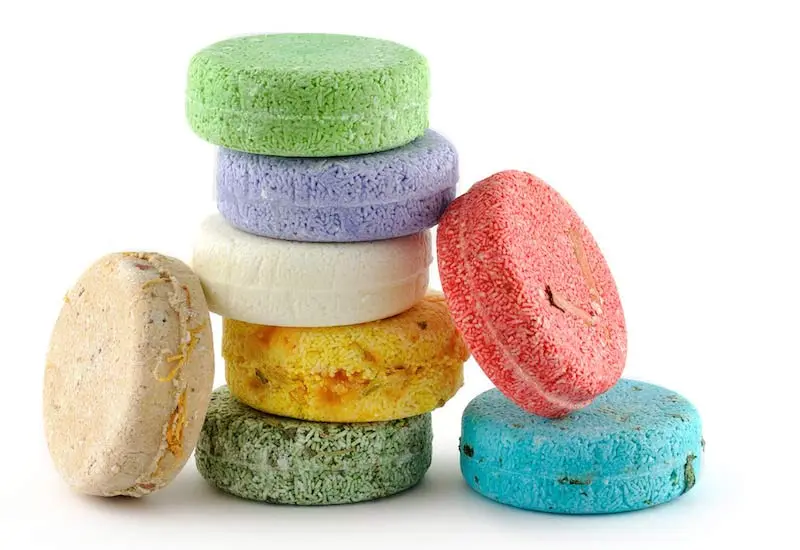Skin Care and Beauty Tips
Plasma vs Serum: A Comparative Analysis
Plasma and serum are two essential components of blood that play distinct roles in medical diagnostics, research, and commercial applications. While they may seem similar at first glance, they possess significant differences in composition, collection, usage, and clinical significance. Understanding these disparities is crucial for healthcare professionals, researchers, and industries relying on blood-based products.

Plasma vs Serum: Understanding the Differences
Definition of Plasma
Plasma is the liquid component of blood, constituting approximately 55% of its total volume. It is primarily composed of water, electrolytes, proteins, hormones, and waste products. Plasma serves as a medium for transporting nutrients, gases, and waste products throughout the body.
Definition of Serum
Serum, on the other hand, is the liquid obtained after blood coagulation and removal of clotting factors and blood cells. It lacks fibrinogen and other clotting factors present in plasma but retains proteins such as antibodies and albumin.
Composition of Plasma and Serum
Components of Plasma
Plasma contains various proteins like albumin, globulins, and fibrinogen, which play crucial roles in maintaining osmotic balance, immune function, and blood clotting. Additionally, it carries hormones, enzymes, nutrients, electrolytes, and waste products.
Components of Serum
Serum shares many components with plasma, including electrolytes, proteins, and hormones. However, it lacks clotting factors like fibrinogen and factors V and VIII, which are consumed during the clotting process.
Collection Process
How Plasma is Collected
Plasma is typically obtained by centrifuging whole blood, which separates the cellular components from the liquid portion. Anticoagulants are often added to prevent clotting during collection, ensuring the preservation of plasma’s composition.
How Serum is Collected
Serum is collected by allowing blood to clot naturally or by using clot activators. After clot formation, the blood is centrifuged to separate the serum from the clot and cellular components.
Uses in Medical Field
Medical Applications of Plasma
Plasma is commonly used in transfusions to replace blood volume or provide specific proteins, such as clotting factors or antibodies, to patients with deficiencies. It is also utilized in therapies for autoimmune diseases and coagulation disorders.
Medical Applications of Serum
Serum is primarily employed in diagnostic testing, particularly in immunoassays and clinical chemistry analyses. It serves as a sample matrix for detecting antibodies, antigens, enzymes, and other biomarkers indicative of various diseases.
Storage and Stability
Storage Conditions for Plasma
Plasma is typically frozen at temperatures below -20°C to preserve its stability and prevent degradation of labile proteins. Proper storage is essential to maintain the integrity of plasma components for extended periods.
Storage Conditions for Serum
Serum is stored refrigerated at temperatures between 2°C and 8°C to prevent bacterial growth and maintain stability. However, serum samples are more prone to degradation compared to plasma due to the absence of clotting factors.
Laboratory Testing
Laboratory Tests Using Plasma
Plasma is utilized in a wide range of laboratory tests, including coagulation assays, protein electrophoresis, and blood typing. It provides valuable insights into the clotting cascade, protein concentrations, and immunological status.
Laboratory Tests Using Serum
Serum is preferred for many diagnostic tests due to its clotting properties being removed, making it compatible with various assays. Common tests include measuring glucose, cholesterol, enzymes, hormones, and markers of liver and kidney function.
Clinical Significance
Importance of Plasma in Diagnostics
Plasma plays a critical role in diagnosing coagulation disorders, assessing liver function, and monitoring therapeutic drug levels. It is indispensable in emergency transfusions and treating patients with bleeding disorders.
Importance of Serum in Diagnostics
Serum is essential for detecting infectious diseases, autoimmune conditions, and assessing cardiac health. Its wide availability and compatibility with diagnostic assays make it a valuable tool in clinical laboratories worldwide.
Research and Development
Role of Plasma in Research
Plasma is invaluable in studying blood-related diseases, understanding immune responses, and developing novel therapies. Research utilizing plasma has led to significant advancements in transfusion medicine, immunology, and drug development.
Role of Serum in Research
Serum serves as a valuable resource for biomarker discovery, disease surveillance, and pharmacokinetic studies. Its broad range of analytes makes it suitable for investigating various physiological and pathological processes.
Commercial Applications
Commercial Uses of Plasma
Plasma-derived products, such as immunoglobulins, clotting factors, and albumin, are essential for treating patients with immunodeficiencies, hemophilia, and burns. Plasma fractionation is a lucrative industry, catering to diverse medical needs worldwide.
Commercial Uses of Serum
Serum-based products, including diagnostic reagents and calibrators, are in high demand for clinical laboratories and research institutions. Serum banks provide researchers with standardized samples for validating assays and conducting studies.
Challenges and Limitations
Challenges in Plasma Utilization
Plasma collection and processing require specialized equipment and expertise, posing logistical challenges in resource-limited settings. Additionally, ensuring the safety and efficacy of plasma-derived products necessitates stringent regulatory oversight.
Limitations in Serum Applications
Serum samples are susceptible to preanalytical variables, such as hemolysis, lipemia, and contamination, which can affect test results. Standardizing collection and processing protocols is essential to minimize variability and ensure reproducibility.
Future Perspectives
Potential Advancements in Plasma Research
Advancements in plasma research may lead to the development of novel therapies for various diseases, including cancer, infectious diseases, and autoimmune disorders. Additionally, improved plasma fractionation techniques could enhance the availability and safety of plasma-derived products.
Emerging Trends in Serum Applications
Emerging trends in serum applications include the development of point-of-care testing devices, multiplex assays, and personalized medicine approaches. These advancements aim to improve diagnostic accuracy, efficiency, and patient outcomes in clinical settings.
Conclusion
Plasma and serum are invaluable components of blood with distinct roles in healthcare, research, and industry. Understanding their differences in composition, collection, and applications is essential for optimizing their utilization and advancing medical and scientific knowledge.
Skin Care and Beauty Tips
Shampoo Bars: A Sustainable and Effective Alternative

In recent years, there has been a significant shift in consumer preferences towards more sustainable and eco-friendly products. One such product that has gained traction is the shampoo bar. Offering a plethora of benefits over traditional liquid shampoos, shampoo bars have become a staple in many households worldwide.

History and Evolution of Shampoo Bars
Shampoo bars have a long and fascinating history, dating back to ancient civilizations where natural ingredients like herbs and plant extracts were used to cleanse the hair. Over time, the formulation and production of shampoo bars have evolved, incorporating modern techniques and ingredients while still retaining their natural essence.
Ingredients Used in Shampoo Bars (2024)
The ingredients used in shampoo bars vary widely depending on the brand and formulation. However, most shampoo bars contain natural ingredients such as coconut oil, shea butter, and essential oils, which not only cleanse the hair but also nourish and moisturize it without stripping away its natural oils.
Environmental Impact
One of the key advantages of shampoo bars is their minimal environmental impact. Unlike traditional liquid shampoos that come in plastic bottles, shampoo bars are typically packaged in recyclable or biodegradable materials, reducing plastic waste and carbon footprint.
How to Use Shampoo Bars
Using a shampoo bar is simple and straightforward. Just wet your hair, lather the bar between your hands, and massage the lather into your scalp and hair. Rinse thoroughly with water, and you’re done! For best results, follow up with a conditioner bar or apple cider vinegar rinse.
Different Varieties and Formulations
Shampoo bars come in a wide range of varieties and formulations to suit different hair types and preferences. Whether you have oily, dry, or curly hair, there’s a shampoo bar out there for you. Additionally, specialty bars infused with ingredients like tea tree oil or charcoal are available for addressing specific hair concerns.
Cost Comparison with Liquid Shampoos
While the upfront cost of a shampoo bar may seem higher than that of a traditional liquid shampoo, it’s essential to consider the long-term savings. Since shampoo bars are more concentrated and last longer, they ultimately prove to be more cost-effective in the long run.
Potential Drawbacks of Shampoo Bars
Despite their many benefits, shampoo bars may not be suitable for everyone. Some individuals may experience an adjustment period as their hair adapts to the new cleansing method. Additionally, storing and traveling with shampoo bars can be challenging due to their solid form.
DIY Shampoo Bars
For those who prefer a more hands-on approach, making your own shampoo bars at home can be a fun and rewarding DIY project. With just a few simple ingredients like coconut oil, castor oil, and lye, you can create customized shampoo bars tailored to your hair’s needs.
Popular Brands and Products
In recent years, the market for shampoo bars has exploded, with numerous brands offering a wide array of options. From small artisanal brands to established eco-conscious companies, there’s no shortage of choices when it comes to finding the perfect shampoo bar for your hair.
Addressing Common Myths and Misconceptions
Despite their growing popularity, shampoo bars are still subject to various myths and misconceptions. From doubts about their effectiveness to concerns about residue buildup, it’s essential to separate fact from fiction when considering making the switch to shampoo bars.
Shampoo Bars for Different Hair Concerns
Whether you’re dealing with oily scalp, dry ends, or damaged hair, there’s a shampoo bar out there tailored to your specific needs. By choosing the right formulation and ingredients, you can achieve clean, healthy-looking hair without compromising on sustainability.
Tips for Transitioning to Shampoo Bars
Making the switch to shampoo bars can be a bit daunting, especially if you’ve been using liquid shampoos for years. However, with a little patience and perseverance, you can successfully transition to using shampoo bars and reap the benefits of healthier hair and a cleaner planet.
Global Adoption and Market Trends
The popularity of shampoo bars is not limited to any particular region or demographic. From eco-conscious millennials to budget-conscious families, people from all walks of life are embracing the shampoo bar revolution. As awareness of environmental issues continues to grow, the market for shampoo bars is expected to expand even further in the coming years.
Conclusion
In conclusion, shampoo bars offer a sustainable and effective alternative to traditional liquid shampoos. With their minimal environmental impact, wide range of formulations, and cost-effective nature, shampoo bars are a win-win for both consumers and the planet. By making the switch to shampoo bars, you can enjoy clean, healthy hair while reducing your carbon footprint.
Skin Care and Beauty Tips
Organic Shampoo: Elevate Your Haircare Routine Naturally

In today’s world, where people are increasingly conscious about their health and the environment, the demand for organic products is on the rise. One such product gaining popularity is organic shampoo. But what exactly sets organic shampoo apart, and why should you consider making the switch? Let’s delve into the world of organic shampoo and uncover its numerous benefits.

1. Introduction to Organic Shampoo
Organic shampoo is formulated using natural ingredients derived from plants, herbs, and other organic sources. Unlike conventional shampoos that contain synthetic chemicals and harsh detergents, organic shampoos are free from sulfates, parabens, phthalates, and other potentially harmful substances. This makes them gentler on the hair and scalp, promoting healthier locks without compromising on cleanliness.
2. Benefits of Organic Shampoo
Environmental Benefits
One of the primary advantages of organic shampoo is its eco-friendliness. By opting for organic haircare products, you’re reducing your environmental footprint. Organic shampoos are often manufactured using sustainable practices and biodegradable packaging, minimizing the impact on the planet.
Health Benefits
Conventional shampoos often contain chemicals that can strip the hair and scalp of their natural oils, leading to dryness, irritation, and even long-term damage. Organic shampoos, on the other hand, are enriched with nourishing botanicals and vitamins that promote hair health and hydration. They’re gentle enough for sensitive skin and can help alleviate issues like dandruff and scalp inflammation.
3. Ingredients to Look for in Organic Shampoo
When choosing an organic shampoo, it’s essential to pay attention to the ingredients list. Look for natural oils like coconut oil, argan oil, and jojoba oil, which help moisturize and strengthen the hair. Botanical extracts such as aloe vera, chamomile, and green tea provide additional nourishment and antioxidant protection. Essential oils like lavender, rosemary, and peppermint not only impart a pleasant scent but also offer therapeutic benefits for the scalp and hair.
4. How to Choose the Right Organic Shampoo
Navigating the world of organic haircare can be overwhelming, especially with so many options available. Here are some tips for selecting the right organic shampoo for your needs:
Understanding Labels
Pay attention to labels and certifications that indicate a product is organic or natural. Look for seals like USDA Organic, COSMOS Organic, or EcoCert, which certify that the product meets specific standards for organic ingredients and manufacturing processes.
Avoiding Harmful Chemicals
Be wary of greenwashing tactics and misleading marketing claims. Just because a product is labeled as “natural” doesn’t necessarily mean it’s free from harmful chemicals. Avoid shampoos containing sulfates, parabens, silicones, and synthetic fragrances, as these ingredients can be harsh and potentially harmful to your hair and health.
5. DIY Organic Shampoo Recipes
If you’re feeling adventurous, you can even make your own organic shampoo at home using simple, natural ingredients. Here are a couple of DIY recipes to try:
Coconut Milk and Aloe Vera Shampoo
- 1 cup coconut milk
- 1/4 cup liquid castile soap
- 1 tablespoon aloe vera gel
- 1 teaspoon almond oil
- 10 drops essential oil (optional)
Mix all the ingredients in a bottle and shake well before each use. Apply to wet hair, lather, and rinse thoroughly.
Honey and Olive Oil Shampoo
- 1/2 cup raw honey
- 1/4 cup olive oil
- 1/4 cup liquid castile soap
- 10 drops essential oil (optional)
Combine the ingredients in a bottle and shake until well combined. Use as you would regular shampoo, massaging into wet hair and scalp before rinsing.
6. Common Misconceptions about Organic Shampoo
Despite the numerous benefits of organic shampoo, there are some common misconceptions that may deter people from making the switch.
Effectiveness
Some skeptics believe that organic shampoos are not as effective as their conventional counterparts, but this couldn’t be further from the truth. Organic shampoos cleanse the hair just as effectively while providing additional nourishment and benefits.
Cost
Another misconception is that organic shampoos are prohibitively expensive. While some organic products may have a higher price point, there are plenty of affordable options available, especially if you consider the long-term benefits to your hair and overall health.
7. The Future of Organic Haircare (2024)
As consumers become more conscious of the ingredients in their personal care products, the demand for organic haircare is expected to continue growing. Manufacturers are innovating to create new formulations that are both effective and environmentally sustainable, driving further adoption of organic shampoo and other natural haircare products.
Conclusion
In conclusion, making the switch to organic shampoo is not only beneficial for your hair and scalp but also for the environment. By choosing products made with natural ingredients, you can enjoy healthier, more vibrant hair without exposing yourself to potentially harmful chemicals. With a wide range of options available, there’s never been a better time to embrace organic haircare.
Skin Care and Beauty Tips
Lotions: Your Ultimate Guide to Skin Hydration

Lotions are skincare products designed to moisturize and hydrate the skin. They come in various forms, including creams, gels, and ointments, each tailored to specific skin types and concerns. From lightweight formulas for daily use to rich creams for intense hydration, there’s a lotion out there for everyone.

Whether you have dry, oily, or combination skin, finding the right skincare routine can be a challenge. However, one essential product that everyone can benefit from is lotion. Lotions are not only essential for keeping your skin hydrated but also for protecting it from environmental damage and maintaining its overall health. In this comprehensive guide, we’ll delve into everything you need to know about lotions, from understanding the different types to choosing the right one for your skin type.
Understanding the Different Types of Lotions
Moisturizing Lotions
Moisturizing lotions are perhaps the most common type of lotion available on the market. These lotions are formulated to replenish the skin’s moisture barrier, preventing dryness and flakiness. They typically contain ingredients such as hyaluronic acid, glycerin, and ceramides, which help to attract and retain moisture in the skin.
Benefits of Moisturizing Lotions
Moisturizing lotions provide numerous benefits for the skin, including:
- Hydration: Keeps the skin hydrated and prevents moisture loss.
- Softness: Leaves the skin feeling soft and smooth.
- Protection: Helps to protect the skin from environmental stressors.
Ingredients to Look for in Moisturizing Lotions
When choosing a moisturizing lotion, look for ingredients like:
- Hyaluronic acid: Known for its ability to hold moisture in the skin.
- Glycerin: Attracts moisture to the skin’s surface.
- Ceramides: Help to restore the skin’s natural barrier.
Sunscreen Lotions
Sunscreen lotions are specially formulated to protect the skin from the harmful effects of the sun’s UV rays. They contain active ingredients that absorb or reflect UV radiation, reducing the risk of sunburn, premature aging, and skin cancer.
Importance of Sunscreen Lotions
Using sunscreen lotion is essential for:
- Preventing sunburn: Reduces the risk of sunburn and skin damage.
- Anti-aging: Helps to prevent premature aging caused by UV exposure.
- Skin cancer prevention: Reduces the risk of developing skin cancer.
Key Ingredients for Effective Sunscreen Lotions
Look for sunscreen lotions that contain:
- Broad-spectrum protection: Shields the skin from both UVA and UVB rays.
- SPF 30 or higher: Provides adequate protection against UV radiation.
- Water-resistant formula: Stays effective even when sweating or swimming.
Specialty Lotions
In addition to moisturizing and sunscreen lotions, there are also specialty lotions available for specific skin concerns. These may include:
- Acne-fighting lotions: Formulated with ingredients like salicylic acid to target acne-prone skin.
- Anti-aging lotions: Contain ingredients like retinol and peptides to reduce fine lines and wrinkles.
- Eczema or psoriasis lotions: Designed to soothe and relieve symptoms of these skin conditions.
How to Choose the Right Lotion for Your Skin Type
Choosing the right lotion for your skin type is crucial for achieving optimal results. Here are some steps to help you make the right decision:
Assessing Your Skin Type
Determine whether you have dry, oily, combination, or sensitive skin, as this will influence the type of lotion you need.
Reading Labels and Understanding Ingredients
Pay attention to the ingredients list and look for ones that target your specific skin concerns, such as dryness, acne, or aging.
Considering Additional Factors
Take into account factors like fragrance, texture, and packaging preferences when selecting a lotion that suits your needs and preferences.
Tips for Proper Application of Lotions
To get the most out of your lotion, follow these application tips:
Cleanse Your Skin First
Start with clean skin to remove any dirt, oil, or makeup that may interfere with the absorption of the lotion.
Use the Right Amount
Apply a pea-sized amount of lotion for your face and a generous amount for your body, ensuring even coverage.
Massage the Lotion In
Gently massage the lotion into your skin using upward circular motions to promote absorption and circulation.
Common Mistakes to Avoid When Using Lotions
To ensure maximum effectiveness and avoid potential pitfalls, steer clear of these common mistakes:
Overapplying Lotion
Using too much lotion can leave your skin feeling greasy and may clog pores, leading to breakouts.
Ignoring Expiry Dates
Expired lotions may not only be less effective but could also harbor bacteria, increasing the risk of skin irritation or infection.
Using the Wrong Type of Lotion for Your Skin
Using a lotion that’s not suited to your skin type can worsen existing issues or create new ones, so choose wisely.
Conclusion
In conclusion, lotions are versatile skincare products that play a crucial role in maintaining healthy, hydrated skin. By understanding the different types of lotions available and how to choose the right one for your skin type, you can ensure that your skin stays moisturized, protected, and looking its best.
-

 Skin Care and Beauty Tips2 weeks ago
Skin Care and Beauty Tips2 weeks agoThe Power of Sunscreen in Your Skincare Routine (2024)
-

 Top 102 weeks ago
Top 102 weeks agoTop 10 Army Sportswear in 2024: Gear Up for Performance and Style of an Elite
-

 Top 102 weeks ago
Top 102 weeks agoTop 10 Business Ideas for Couples: Building Success Together
-

 Pets2 weeks ago
Pets2 weeks agoDog Breeds in India 2024: A Vibrant Canine Mosaic
-

 Top 102 weeks ago
Top 102 weeks agoTop 10 Hollywood Movie Theaters: Where the Magic of Cinema Comes Alive
-

 Movie Reviews2 weeks ago
Movie Reviews2 weeks agoGodzilla x Kong: The New Empire Movie Review (2024)
-

 Cooking Recipes2 weeks ago
Cooking Recipes2 weeks agoThe Rich Aroma and Flavor of Colombian Coffee: A Taste of Tradition 2024
-

 Skin Care and Beauty Tips2 weeks ago
Skin Care and Beauty Tips2 weeks agoHair Beauty: Unlocking the Secrets to Gorgeous Locks
